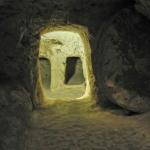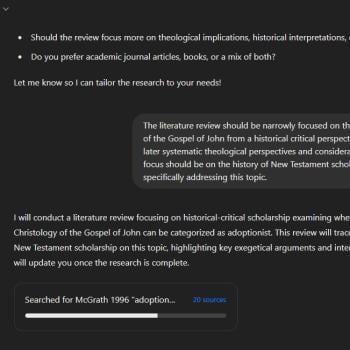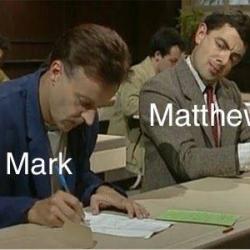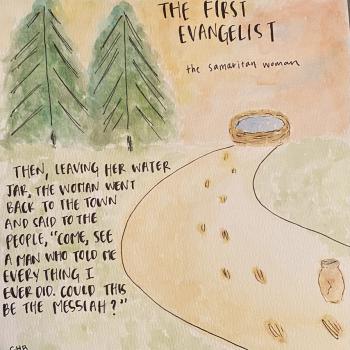I had a funny exchange on Twitter, hinting at having a new interpretation of the story about the woman accused of committing adultery found in John 8 in many manuscripts (as I did here when my Biblical Archaeology Review article related to this part of the book came out). This was in response to what I thought was a brilliantly clever tweet (even though I don’t think the expression existed in Jesus’ time) by Traci Rhoades. She said:
Remember when Jesus wrote something in the dirt when the people were going to stone the woman caught in adultery.
What if he wrote: beware of drawing lines in the sand?
— Traci Rhoades (@tracesoffaith) April 1, 2021
I responded by saying “I actually propose a possibility that, to my knowledge, no one has suggested before, in my book What Jesus Learned from Women and in a related article in the most recent issue of Biblical Archaeology Review. Do you want me to tell you more or would that be a spoiler?” To that someone offered another clever tweet, saying they think the statute of limitations has passed on Bible spoilers:
I think the statute of limitations has passed on Bible spoilers �
— polkapocalyptic (@meunierd) April 1, 2021
I clarified that I meant my book What Jesus Learned from Women, just out, not the Bible (as in “spoiler alert: Jesus dies”).
I then went on to write that there are a lot of key pieces to the puzzle that readers (and filmmakers and others) ignore or miss, such as that this takes place in the Temple in Jerusalem. Archaeological work on the Temple floor tells us that, even if Jesus was writing on large stone slabs rather than ornate tiles, he wasn’t writing to be read. In this well-trafficked space nothing traced in the dust would be legible.
So if the point was not to be read then what could it have been? Jesus was brought a girl who was accused of being “caught in the act” of unfaithfulness to her husband/betrothed. Yet no one can be caught in the act of adultery alone.
There is a ritual that was designed to address jealous husbands who suspected infidelity. It involved dust from the temple floor and writing, and was carried out in the Temple court where all this was happening (Numbers 5:11-31).
So why didn’t they use that? Why did they have a conundrum, a case they brought before Jesus? Because according to rabbinic sources, the Mishnah and Tosefta, the ritual of the bitter waters was discontinued during the time of Rabbi Yohanan ben Zakkai – a contemporary of Jesus!
Jesus isn’t voicing his criticism of the Temple authorities the same way he would about another recent innovation, the selling of animals within the court of Gentiles. That direct action/criticism, according to three of the Gospels, led quite directly to his arrest and execution.
Here he’s less direct. He points to the dust of the Temple floor, the act of writing, highlighting all the elements of the ritual carried out in that very location in the past, which those involved probably would have made use of were it still available as an option.
There are a lot of “spoilers” here but even so there is much more to this story. My article in Biblical Archaeology Review focuses on this.
That’s the exchange from Twitter, which I thought it might be useful to gather together here for blog readers. But do take a look at the original exchange, and you may find you’ll want to follow Traci Rhoades on Twitter if you don’t already.













